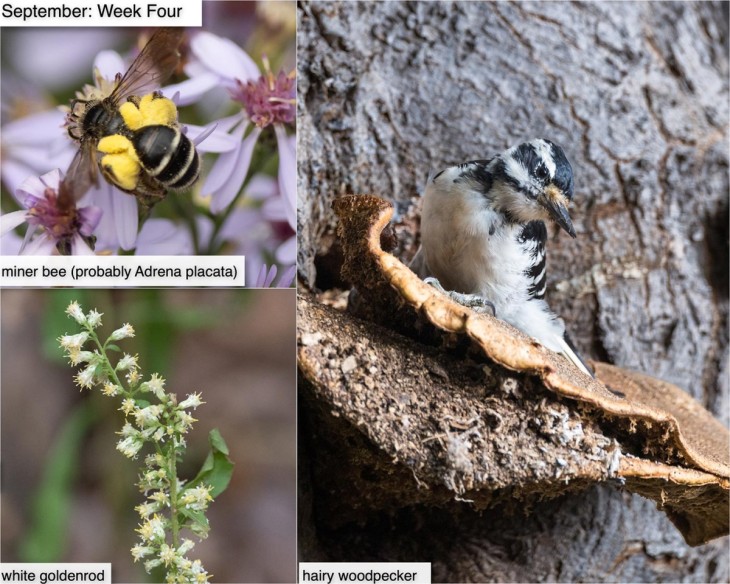This week in the woods, we saw several Andrena bees, most likely peaceful miner bees (Andrena placata) heavily loaded with late-blooming aster pollen. These solitary bees are notable for the quantities of pollen they carry; in addition to sticking to their back legs, as you see with most bees, pollen also collects on their fuzzy thoraxes. As noted in the Vermont Atlas of Life, one way to identify bees in this group is by the white hair bands on their abdomen.
Where there are decaying fungi, there will be insects. And where there are insects, there are birds to gobble them up. We found this young hairy woodpecker pecking at old fungi on the side of tree. (Thanks to Tig Tillinghast for the image).
Finally, we’ve noticed several species of goldenrod and aster growing along forest trails. White goldenrod, also called silverrod, is the only white-flowered goldenrod species in the East. It can grow in both full and partial sun, and we often find it growing singly or in small groups, with flies and small bees crawling on its flowers.
What have you noticed in the woods this week? Submit a recent photo for possible inclusion in our monthly online Reader Photo Gallery.



Discussion *